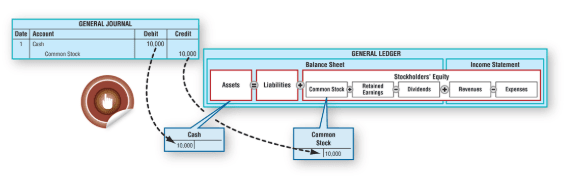
Retained earnings are the share of a can you have a negative retained earnings company’s profits it has left after paying dividends. A company’s total retained earnings are an important figure for both the business and its investors. The number appears on a balance sheet and can be an indicator of a company’s financial health and responsibility. The retained earnings account is a component of the shareholder’s equity section of the balance sheet. This is a vital component of a company’s financial health and long-term viability, as it can provide the company with resources to fund growth, make investments in its operations, or pay off debts.
Impacts on Creditworthiness

If a company has negative retained earnings, it has accumulated deficit , which means a company has more debt than earned profits. Private and public companies face different pressures when it comes to retained earnings, though dividends are never explicitly required. They let a company grow, pay off debts, and stay steady during tough times. They can also mean bigger dividends, which attract more investors. This can make investors and lenders Outsource Invoicing cautious, seeing the company as a risk.
- Tackling the complexities of negative retained earnings head-on and making informed, strategic decisions can pave the way for recovery and long-term success.
- Though retained earnings are important for investors, they certainly aren’t the only factor to consider.
- If you recall, retained earnings from last week’s post are the balance leftover from net income set aside for dividends, share repurchases, or reinvestment back into the company.
- Sounds like you got lucky with a knowledgeable agent rather than this being a reliable way to get help.
- Understanding the distinction between net income vs retained earnings is crucial for business owners, investors, and financial professionals alike.
- Companies with a history of significant losses are often viewed as less stable or less promising, which can depress their market value and limit their ability to attract and retain top talent.
- Retained earnings are also known as accumulated earnings, earned surplus, undistributed profits, or retained income.
How much should a company keep in retained earnings?

Retained earnings is part of the owner’s equity section of the balance sheet. Retained earnings do not represent actual cash reserves but rather an accounting entry reflecting how profits are allocated. Net income refers to earnings for a specific period, while retained earnings are cumulative over income summary time.

Retained Earnings: Everything You Need to Know for Your Small Business
Negative retained earnings show a company’s struggles but also its journey through financial operations. These earnings are what’s left after a firm pays out dividends, found in the shareholders’ equity on the balance sheet. They’re crucial as they fund a business internally and show its financial health and growth potential. They represent the portion of your net income that you’ve decided to keep within the company instead of paying out as dividends. Essentially, they tell you how well your business has been doing over time. Positive retained earnings are a sign of a healthy, growing business, where profits are reinvested to fuel further success.
- In this example, the company has retained earnings of $1,175,000 at the end of the period.
- A qualified dividend is taxed at the capital gains tax rate, while ordinary dividends are taxed at standard federal income tax rates.
- The smart worksheet that ties to the retained earnings line is scd m-2 but I don’t know how to code or describe the closing of the company and of course this can affect the k-1 reporting.
- If that public company decides it’s going to pay out $2M worth of dividends, your total earnings and current year earnings available is $4M.
- Certain types of companies may be more likely to have high retained earnings.
- They appear on the company’s balance sheet and may factor into its valuation.
- EAG is a registered investment adviser with the Securities and Exchange Commission (SEC) and an indirect subsidiary of Empower Annuity Insurance Company of America.

The main difference between retained earnings and profits is that retained earnings subtract dividend payments from a company’s profit, whereas profits do not. Where profits may indicate that a company has a positive net income, retained earnings may show that a company has a net loss, depending on the amount of dividends it paid out to shareholders. Finally, there is one situation in which a company can pay a dividend even with negative retained earnings. Although not a traditional S Corporation, Enron Corporation provides valuable lessons regarding the impact of negative retained earnings.
- To understand a negative P/E ratio, it’s important to note that the value of a stock can never be negative.
- You forecast the FCF will grow 5% annually for the next five years and assign a terminal value multiple of 10 to its year five FCF of $25.52 million.
- Some companies carry heavy debt, or there might be outside economic factors that are temporarily impacting the company.
- All dividends paid to shareholders must be included on their gross income, but qualified dividends will get more favorable tax treatment.
- Arthur Andersen’s experience highlights the severe consequences of negative retained earnings for partnerships.